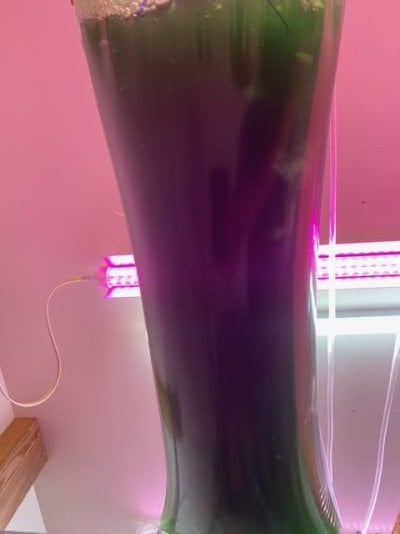I lost a culture this week, and I thought it might be helpful to post a picture and a bit of a warning/caution.
To the untrained eye, this culture might look green and healthy, but in reality it has almost no phyto. Examined under the microscope, it is actually something that looks like pieces of string. I would guess that it is some type of bacteria or fungus that grows very quickly and overpowered the phyto. I don't know what harm or good it would do to a system, but it certainly isn't phyto (and, I'm not going to dose it to find out).
Over the years, I have seen something like this happen on occasion. The takeaway should be that it is important to closely monitor cultures to make sure that they really are healthy phytoplankton. I have even heard of a large professional aquarium that thought they were growing phytoplankton but they were actually growing (and dosing) an unknown organism that was not phyto. So remember, even if it is green, it might not be phyto.

To the untrained eye, this culture might look green and healthy, but in reality it has almost no phyto. Examined under the microscope, it is actually something that looks like pieces of string. I would guess that it is some type of bacteria or fungus that grows very quickly and overpowered the phyto. I don't know what harm or good it would do to a system, but it certainly isn't phyto (and, I'm not going to dose it to find out).
Over the years, I have seen something like this happen on occasion. The takeaway should be that it is important to closely monitor cultures to make sure that they really are healthy phytoplankton. I have even heard of a large professional aquarium that thought they were growing phytoplankton but they were actually growing (and dosing) an unknown organism that was not phyto. So remember, even if it is green, it might not be phyto.


















